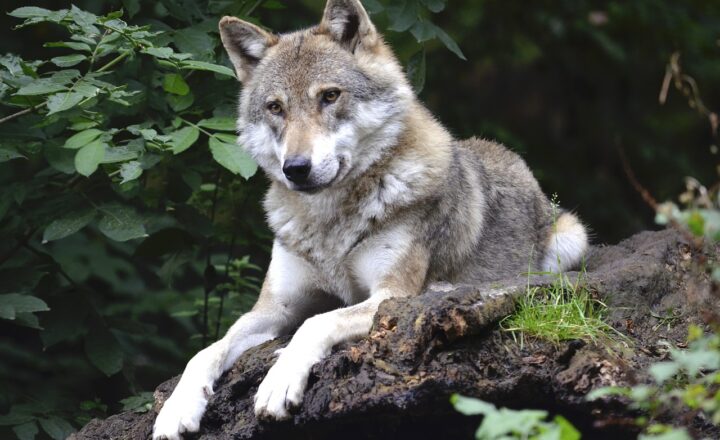How Parrots Navigate the Jungle: A Look at the Natural Habitat and Adaptations of Parrots
November 13, 2024

Parrots are some of the most vibrant and charismatic birds you can find in the wild, especially in the jungles of South America, Central America, and Australia. Their bright colors, playful behavior, and remarkable intelligence have made them a favorite subject for researchers and birdwatchers alike. But beyond their visual appeal, parrots possess a range of fascinating adaptations that enable them to thrive in their complex natural habitats.
1. The Jungle Habitat of Parrots
The jungle environment is rich with biodiversity, which plays a critical role in the survival of parrots. These tropical forests are characterized by dense foliage, towering trees, and intricate ecosystems. Parrots primarily inhabit the canopy layer, where they can easily find food, shelter, and potential mates.
Key Characteristics of Jungle Habitats:
- Climate: The jungle is typically warm and humid, with significant rainfall throughout the year. Parrots are well adapted to withstand these conditions due to their waterproof feathers and the ability to regulate body temperature.
- Food Sources: Parrots primarily feed on fruits, nuts, seeds, and flowers, all of which are abundant in their jungle habitats. Their strong beaks are perfect for cracking open hard-shelled seeds and nuts.
- Predators and Competitors: Parrots face threats from various predators like snakes, large birds of prey, and even mammals. Their colorful plumage often provides excellent camouflage among the jungle foliage, protecting them from being easily spotted by these predators.
Understanding the dynamics of the jungle habitat is essential to comprehend how parrots navigate and survive.
2. Navigation Techniques in the Jungle
Parrots are highly social birds and are often seen flying in flocks. Their navigation skills are honed by both instinct and learned behavior, enabling them to traverse the jungle with remarkable efficiency.
Key Navigation Techniques:
- Visual Cues: Parrots rely heavily on visual cues such as landmarks, colors, and patterns in the foliage to navigate through the jungle. The bright hues of fruits and flowers help them identify food sources from a distance.
- Social Learning: Younger parrots learn important navigation routes by following experienced flock members. This social aspect of learning ensures that new generations can find food and safe nesting locations.
- Vocal Communication: Parrots are known for their vocalizations, which play a crucial role in maintaining group cohesion. Their calls can help flock members locate one another while flying through dense trees and branches, ensuring they don’t get lost in the thick foliage.
These navigation techniques are vital not only for finding food but also for avoiding predators and staying safe within their complicated habitat.
3. Physical Adaptations of Parrots
Parrots possess several physical adaptations that enhance their survival in the jungle environment. These adaptations are key components in how they navigate their ecosystems.
Key Physical Adaptations:
- Strong, Curved Beaks: Their beaks allow them to easily break into hard fruits and seeds while also assisting in climbing. The curved shape helps them grip branches as they move through the trees.
- Feet Structure: Parrots have zygodactyl feet, meaning they have two toes pointing forward and two backward. This unique foot structure enhances their ability to grasp branches tightly, making it easier for them to navigate the jungle canopy.
- Coloration and Camouflage: The vivid colors of many parrot species serve dual purposes: attracting mates and providing camouflage among the vibrant foliage of the jungle, thus helping them evade predators.
These adaptations work together to make parrots uniquely suited for life in the jungle.
4. Social Behavior and Flocking Habits
The social structures of parrots also play a significant role in how they navigate and survive in complex ecosystems like the jungle. Flocking behavior not only aids in navigation but also helps in finding food and fostering social bonds.
Benefits of Social Behavior:
- Safety in Numbers: Flocking provides safety against predators. When a large group of parrots is present, it can be challenging for a single predator to target an individual bird.
- Resource Sharing: Social learning makes it possible for flock members to discover and share new food sources or nesting areas. Young parrots learn by observing more experienced individuals, ensuring effective resource utilization.
- Vocal Coordination: The ability to communicate effectively helps maintain flock structures and assists in navigation. Vocalizations can signal when it’s time to feed, move, or alert others to danger.
The social nature of parrots not only enhances their chances of survival but also significantly influences their navigation skills within their intricate jungle habitats.
5. Conclusion: The Parrot’s Unrivaled Adaptability
In conclusion, parrots are remarkable navigators of the jungle. Their vibrant colors, strong beaks, and unique foot structure help them adapt to their lush surroundings. With their incredible social behavior, vocalizations, and collective navigation skills, they have established themselves as one of the most successful inhabitants of their natural habitats.
As we continue to study these fascinating birds, it is crucial to remember the continuous impact of habitat loss and climate change on their survival. Conservation efforts aimed at preserving their natural habitats will ensure that future generations can marvel at these colorful creatures as they navigate their breathtaking jungle homes.
The relationship between parrots and their jungle habitats provides a compelling narrative of survival and adaptation—one that inspires both researchers and nature enthusiasts alike. By appreciating and protecting these environments, we can help preserve the rich tapestry of life that parrots represent.








